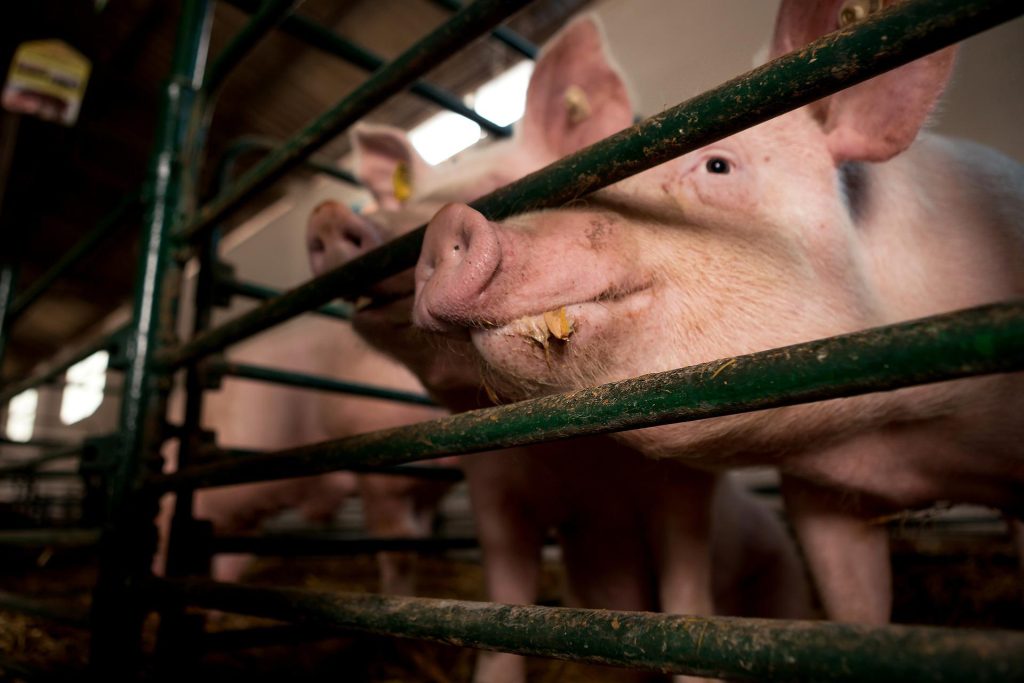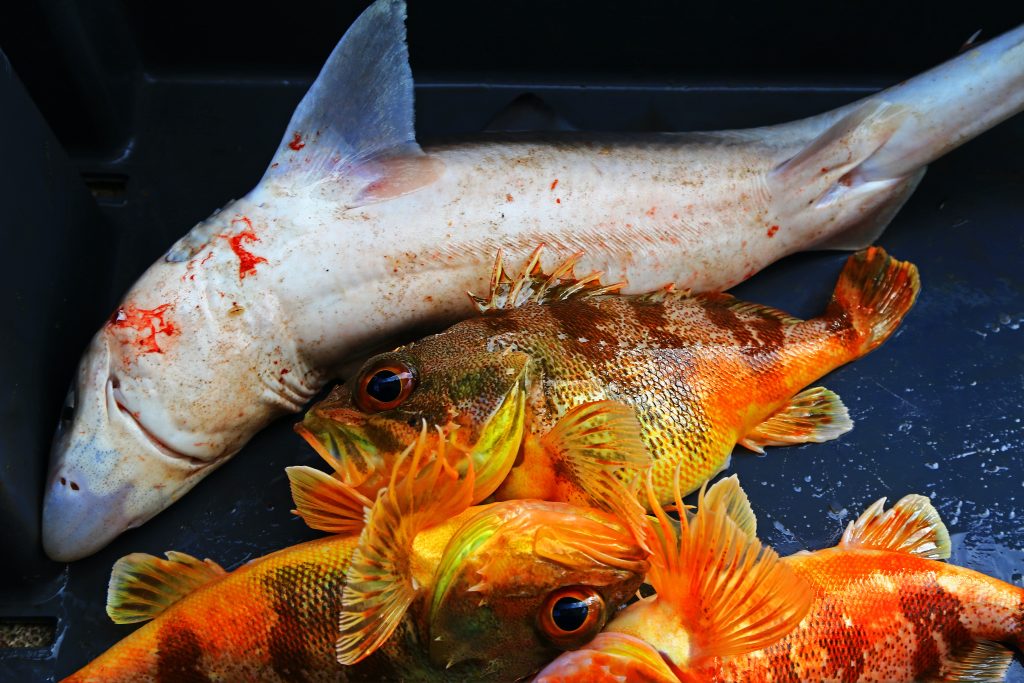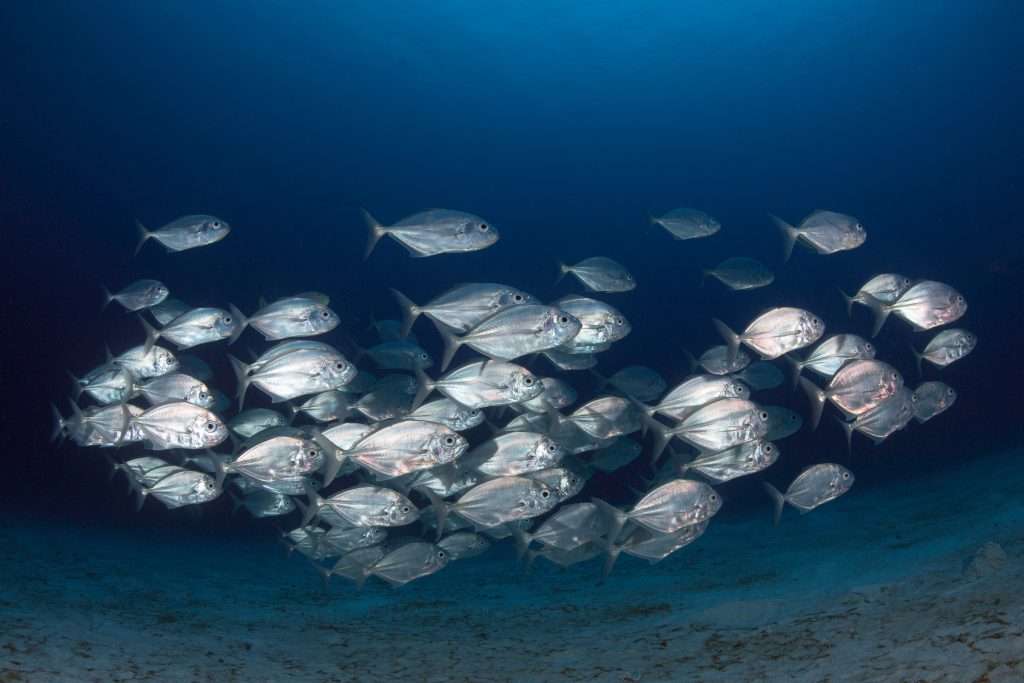Humans have traditionally held the firm belief that we are the ‘sentient beings’ and we are highly superior to other species on planet Earth. We put this down to ideas about consciousness, feeling, thinking and reasoning. However, in recent decades, scientists and animal rights activists have given more weight to sentience in animals. Many legal systems around the world now acknowledge animals as sentient creatures because of their perceived ability to feel emotions. Interestingly, countries such as the UK are even starting to recognise sentient sea creatures. The implications for ocean governance and the fishing industry are enormous.
What Does it Mean to Be Sentient?
Sentience is a concept that lacks a clear definition or tangible indicators. The Sentience Institute describes it as simply an ability to experience both positive and negative feelings. The concept relates to a being’s thoughts and emotions. Physiological processes or anatomical structures alone cannot fully explain this quality.
As a result, qualitative observation shows many animals have evidence of sentient behaviour. They show a capacity to feel joy and happiness, as well as fear, pain, and sadness.
Today, our understanding of sentience challenges traditional ideas about human ‘superiority’. Animal rights advocates, theorists, and scientific studies are giving more weight to the evidence that suggests animals are sentient, emotional beings.
Recently, the Cambridge Declaration on Consciousness (2012) declared that humans are ‘not the only sentient beings on this planet’. This progression in thought has wide implications for our treatment of other creatures on the planet.

Image credits: Pixabay
How is Animal Sentience Measured?
There are three general criteria for deciding whether a being is sentient. These involve considerations that are:
- behavioural,
- evolutionary, and
- physiological
However, observing sentience is not as straightforward as it sounds. Animals don’t possess the human capacity to describe their emotions, thus making their sentience complex to measure. There is also an incredible variety of animal life on earth and many ways to express sentience.
In marine species, for example, certain behaviours can suggest feelings and emotions:
- Orcas stay with their families for life in the oceans.
- Fish often rub against one another because they enjoy physical contact.
- Octopi are able to solve complex puzzles.
- Crabs and lobsters exhibit significant pain and distress when killed by boiling alive.
However, it is interesting that we place different values on marine life based on quite arbitrary principles. For example, ‘sentient’ sea creatures such as whales, dolphins and turtles are protected, whereas tuna, salmon, octopus, crabs, lobsters and prawns are killed for food.
recognising Sentient sea creatures and Animals By Law
The UK Animal Sentience Act (2022)
The United Kingdom (UK) has a long history of formal recognition of sentience in animals. In April, 2022, the the UK Parliament passed a legislative bill that recognises sentience in animal species. The new law states that animals, like humans, are sentient beings. The implication is that sentience is crucial to protecting animal welfare. This law will also lead to the formation of an Animal Sentience Committee. In practice, the committee will ensure that the UK Government takes animal sentience into account when making policy decisions that affect them.
Initially, the British Government proposed not to adopt the law. The suggestion was that recognition of animal sentience is already implicit in British law through the Animal Welfare Act (Ares 2019). However, post-Brexit lawmakers introduced the UK Animal Sentience Act, taking the original Lisbon Treaty declaration on animal sentience to new policy positions.
The recognition of sentient sea creatures
The new UK Sentience Act also protects sea creatures such as decapod crustaceans and cephalopods. Sentient sea creatures include octopuses, crabs, crayfish and lobsters which have complex central nervous systems. Cephalopods are still intensively fished using nets and trawlers which inflict severe pain and suffering. The nervous system of crustaceans is less centralized than those of fish. However, it is complex enough for them to feel pain.
Notwithstanding, the 2022 UK Animal Sentience legislation will not affect fishing practices or restaurants that sell seafood. Instead, it aims to protect animals in future decision-making. Yet, the establishment of a national policy on sentient sea creatures by a major economy represents a significant step forward for animal rights.
Although most countries don’t recognise invertebrates and sea creatures as sentient, many jurisdictions acknowledge animals as sentient beings. The newly passed Sentience Act puts the UK in the company of several major countries, including Australia, New Zealand, Austria, Belgium, Denmark, France, Germany, Spain, Sweden, Switzerland and Mexico.

Image credits: Jorge Maya
Are we doing enough to protect sentient sea creatures?
Yet, international efforts to preserve sustainable populations of marine species are lagging behind. Notably, current fishing practices do not prioritise ‘humane’ practices because they do not recognise the ability of sea creatures to experience pain and suffering. Instead, mortality in marine species is increasing in a variety of ways:
- Shark, tuna and mackerel populations have rapidly declined during the last 40 years. This is the direct result of ‘overfishing’ and ‘bycatch’.
- Live exports are increasing exponentially due to the high demand for fish and meat products. In addition, fish are starved and transported in poor conditions.
- A variety of methods are used to slaughter farmed fish. However, all of these cause painful suffocation. Gills are cut without the fish first being stunned. Otherwise, they are gassed with carbon dioxide, or simply left to die after removal from the water. The majority of farmed fish are subject to overcrowding and inhumane conditions. Unchecked, this leads to severe stress, worsening water quality, and high mortality.
Studies have found that, in the United States, attempts to incorporate conservation practices into fisheries management have been futile. The country as a whole makes insufficient effort to protect wild-caught marine species from inhumane treatment.
Conversely, If more nations were to enact animal sentience and welfare acts like the UK, a range of industries that exploit animals, and the environmental problems that they cause, would disappear.
‘Bycatch’ – Why is it a Problem?
Around 40 per cent of fish are captured unintentionally as bycatch. They are caught up in nets or hooks unintentionally. Then, they are either thrown back or left to die. Fishing methods like this kill animals like whales, dolphins and other endangered creatures as bycatch. Furthermore, 75 per cent of global fish stocks are being fully or over-exploited. If the world carries on this trajectory, global fisheries could collapse by 2048.
Apex predators such as sharks play a significant role in a healthy ecosystem. However, these are often victims of bycatch. Removing large numbers of sharks and other marine species causes imbalance in marine ecosystems.
So, not only are we killing animals unnecessarily, but sentient animals caught in bycatch are suffer unnecessarily. Unfortunately, bycatch remains a common practice around the world due to consumer demand and lack of stringent regulations. However, prevention remains a complex and challenging problem.

Image credits: Nareeta Martin
Implications of Animal Sentience laws
There is still a long way to go in proving sentience in a wider variety of marine species. Meanwhile, skeptics claim that recognising sentient sea creatures disrupt people’s livelihoods and well being, or it is simply a distraction. Nevertheless, scientific and behavioural studies on the matter are ongoing.
The ethical question remains: should we continue to allow the suffering of sea creatures in order to serve commercial and economic interests, and individual livelihoods? How long can current fishing practices continue without the introduction of measures to reduce pain and distress?
Future policies
Animal welfare experts believe that the UK law on sentient creatures sets a precedent for future humane policy. Meanwhile, scientific studies continue to explore evidence on animal consciousness, including marine species.
However, individual countries and their seafood industries can take humane steps immediately to change how fisheries are managed. They can:
- Re-evaluate current best practice, to lessen suffering caused by fishing.
- Reduce ‘stun-to-kill time’. Fish will suffer for up to 14 minutes if they aren’t properly stunned when taken out of the water.
- Redesign gillnets (large netting panels) to end suffocation and bycatch.
- Increase monitoring and reporting requirements for commercial fisheries.
Greater public awareness
The seafood industry depends on the people who support them. Therefore, encouraging consumers to make more ethical choices will help to change fishing practices.
Some organisations that are advocate for the protection of marine life include:
- MarineBio
- Fish Welfare Initiative
- Greenpeace International
- Marine Fish Conservation Network
- Compassion in World Farming
- Project Seahorse
- Antarctic and Southern Ocean Coalition (ASOC)

Photo by Milos Prelevic
Animal sentience and Sustainability
Recognising sentience in sea creatures is a powerful argument against the practices that cause bycatch. Therefore, there is a close relationship between animal sentience and sustainability. If the animal rights movement achieves its goals and more countries enact animal sentience laws, our ocean ecosystems would be able to recover from human interventions.
THRIVE Project has developed work on ocean governance, marine ecosystems and the sustainability of fisheries with a free online tool: The THRIVE Platform. The Thrive platform measures the sustainability performance of several keystone actors in the seafood industry.
The lack of scientifically proven evidence means the debate on sentient sea creatures continues. However, a lack of evidence shouldn’t justify unnecessary mistreatment of animals. Supporting practices that protect marine life whilst balancing the needs of other stakeholders seems to be a reasonable stance on this issue.
What moves us to treat animals well is our empathy, our compassion, our consciousness and our humane values.
The THRIVE Framework’s Thresholds-based Sustainability Performance Assessment and Business Model Innovation aims to measure the potential of initiatives taken today to help transform society towards a better future. We call this a ‘Thrivable’ state, or a flourishing existence beyond mere sustainability.
Join THRIVE to learn more about the pathway to thrivability, and visit our website to find out about our informative live webinars, podcasts and blog.























